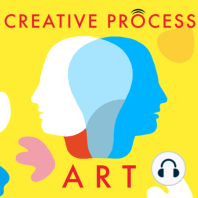20 min listen

(Highlights) AZBY BROWN
FromArt · The Creative Process: Artists, Curators, Museum Directors Talk Art, Life & Creativity
(Highlights) AZBY BROWN
FromArt · The Creative Process: Artists, Curators, Museum Directors Talk Art, Life & Creativity
ratings:
Length:
20 minutes
Released:
Mar 12, 2022
Format:
Podcast episode
Description
“Certainly all Japanese architects have been trained in both the Japanese tradition and the Western tradition and we see a lot of very very well thought out designs in architecture that make use of features of Japanese traditional houses. Japanese buildings like many and other parts of East Asia and Europe before the modern period are held together with wooden joints and pegs and wedges and they can be dismantled. And when a Japanese house was taken down, was demolished, every part of it could be reused. All the beams and columns. There were lumber yards that sold only used timber. Someone would come to buy that. Someone would come to buy the roof shingles, the tiles. Someone would come to buy the tatami floor mats or the sliding screens or all of the metal hardware. All the stuff was reusable and was intended to be reused. There is a concept now of “building as material bank”, and there is actually an organization that is promoting this idea that when you build a building, the materials are simply being borrowed for a certain period of time, a few tens of years, a century perhaps, and when the building is at end of life, when it needs to be replaced, then those materials go back into a resource pool to be reused.In Edo Japan, basically life was pretty good, and they recycled everything. Everything was reused, upcycled. Waste was considered taboo. A person who was wasting was considered an ugly person. So there is a lot that we could talk about: design, the layout, scale. Buildings were rarely taller than two stories. Very good use of environmental features, microclimates, use of wind for cooling, passive solar heating. Good use of planting, gardens, etc. But regarding cities of the future, I think the main thing is it needs to be a place where people feel like they belong and want to take responsibility.I'm from New Orleans, and I am very interested in the fact that cities and the places we live in teach us. They shape us, as much as we shape them. And New Orleans was a wonderful place to grow up in because you wouldn't have said it was sustainable, but the vernacular traditional architecture was naturally cooler in summers because of the way it was built with high ceilings with deep eaves from the roof, with verandas shaded with lots of breezes and lots of gardens, plus it is full of older buildings. And things become gentle over time.”Azby Brown is a leading authority on Japanese architecture, design, and environmentalism and the author of several groundbreaking books, including Just Enough, Small Spaces, The Japanese Dream House, The Very Small Home, and The Genius of Japanese Carpentry. He is lead researcher for Safecast, a global citizen-science organization that pioneered crowdsourced environmental monitoring. Azby Brown has lived in Japan since 1985.· azbybrown.com · www.safecast.org · www.oneplanetpodcast.org · www.creativeprocess.info
Released:
Mar 12, 2022
Format:
Podcast episode
Titles in the series (100)
ERIC FISCHL: Interviewed by Mia Funk · Associate Podcast Producer Chayani Nina Rubesch by Art · The Creative Process: Artists, Curators, Museum Directors Talk Art, Life & Creativity